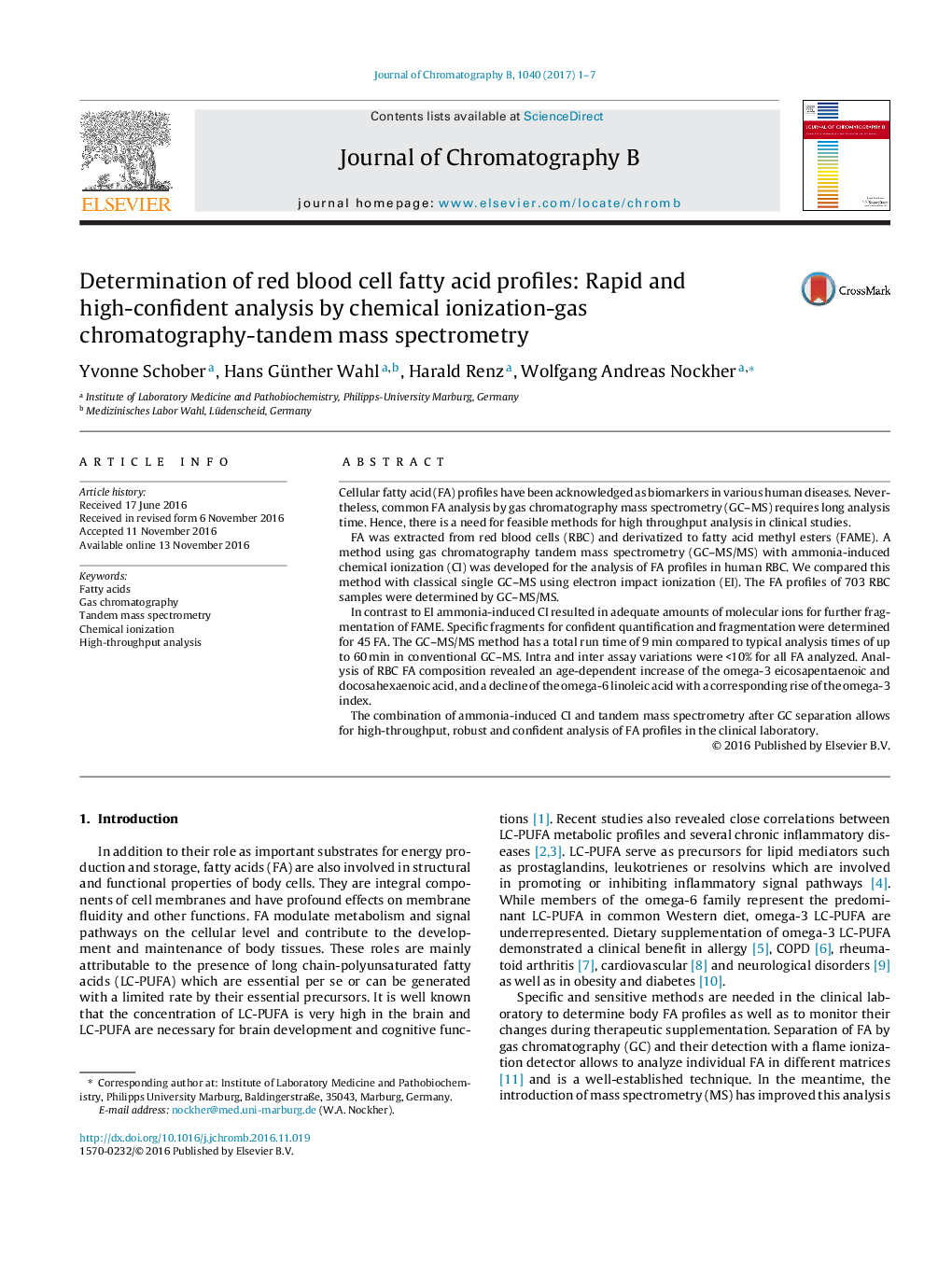| کد مقاله | کد نشریه | سال انتشار | مقاله انگلیسی | نسخه تمام متن |
|---|---|---|---|---|
| 5136561 | 1494019 | 2017 | 7 صفحه PDF | دانلود رایگان |

- The first report using the combination of chemical ionization- gas chromatography-tandem mass spectrometry for high-throughput analysis of fatty acids in the clinical laboratory.
- Reduction of the analysis time to less than 10Â min for a complete fatty acid profile.
- Over 700 individuals measured for providing reference values.
Cellular fatty acid (FA) profiles have been acknowledged as biomarkers in various human diseases. Nevertheless, common FA analysis by gas chromatography mass spectrometry (GC-MS) requires long analysis time. Hence, there is a need for feasible methods for high throughput analysis in clinical studies.FA was extracted from red blood cells (RBC) and derivatized to fatty acid methyl esters (FAME). A method using gas chromatography tandem mass spectrometry (GC-MS/MS) with ammonia-induced chemical ionization (CI) was developed for the analysis of FA profiles in human RBC. We compared this method with classical single GC-MS using electron impact ionization (EI). The FA profiles of 703 RBC samples were determined by GC-MS/MS.In contrast to EI ammonia-induced CI resulted in adequate amounts of molecular ions for further fragmentation of FAME. Specific fragments for confident quantification and fragmentation were determined for 45 FA. The GC-MS/MS method has a total run time of 9Â min compared to typical analysis times of up to 60Â min in conventional GC-MS. Intra and inter assay variations wereâ<10% for all FA analyzed. Analysis of RBC FA composition revealed an age-dependent increase of the omega-3 eicosapentaenoic and docosahexaenoic acid, and a decline of the omega-6 linoleic acid with a corresponding rise of the omega-3 index.The combination of ammonia-induced CI and tandem mass spectrometry after GC separation allows for high-throughput, robust and confident analysis of FA profiles in the clinical laboratory.
Journal: Journal of Chromatography B - Volume 1040, 1 January 2017, Pages 1-7